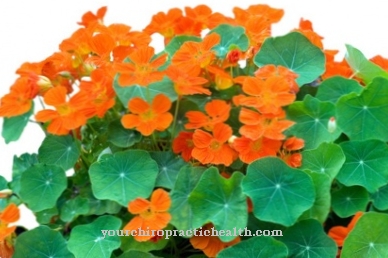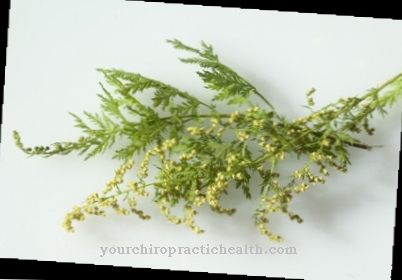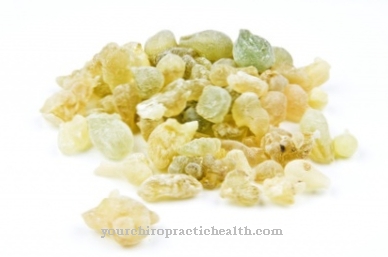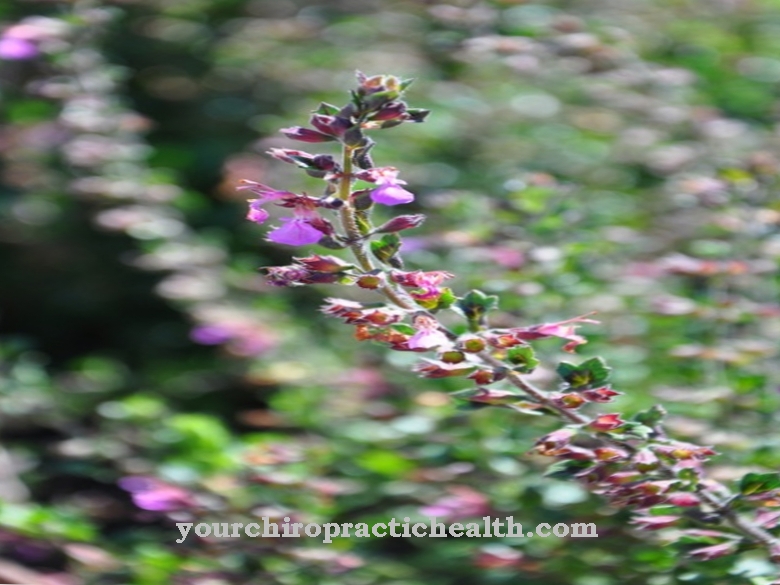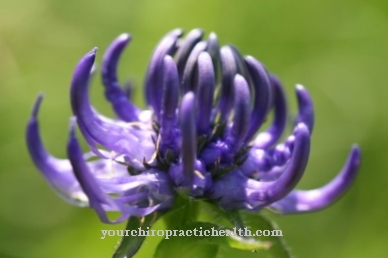Occurrence & cultivation of the sweet flag

Sweet flag is an herbaceous plant that grows to around 60 to 100 cm in size and thrives primarily on flowing waters or on the banks of ponds. The plant has a rhizome that smells aromatic and sword-shaped leaves. The calamus forms greenish-reddish cobs on the sides, the flowers are pentacyclic, that is, they each consist of five petal circles.
The calamus blooms in June and July, whereby the fruits do not ripen in Central Europe, but reproduce vegetatively. The roots of the sweet flag are dug up and cleaned and then cut into pieces about 5 cm in size. These are then split and dried. The leaves contain tannins and bitter substances, starch and the essential oils, eugenol and asarone. In the past, calamus was also known as German ginger , further synonyms are Nipple, Gastric root or Sword hay.
Effect & application
In Asia, calamus is a medicinal plant and in North America it is also used for smoking, teas, as a spice or for medicinal baths. The Indians of Canada also used the medicinal properties of the plant for headaches, exhaustion, toothache, asthmatic complaints and for oral hygiene. The rhizomes are harvested in September and October, and calamus oil, which is used in liqueur and perfume production, is then extracted from the rhizomes.
Calamus is appetizing and invigorating and has a mood-enhancing effect. In too high a dose, however, it can also lead to slight hallucinations. In the event of an overdose, sweating, tremors, vomiting or a racing heart can occur. Responsible for this is the asaron, which is also said to have an aphrodisiac effect.
Calamus helps very well with stomach complaints and is also known as a "life extender". The calamus root also helps to quit smoking. Calamus is also effective for gall bladder and bowel problems and stimulates digestion. The medicinal plant is particularly helpful for intestinal and stomach problems that can be traced back to a disturbance of the autonomic nervous system. A bath can also combat exhaustion. In addition, calamus is also used for the following ailments:
- It helps with a bad stomach.
- It stimulates the flow of bile after a very fatty meal.
- As a schnapps, it can also drive away bone pain by rubbing it in.
- In addition, rubbing in bedridden prevents bedsores.
Importance for health, treatment & prevention
Already the old monks used calamus tea to stimulate the appetite. To do this, 10 grams of calamus root are boiled in one liter of water for 15 minutes, then bitter clover, wormwood leaves or 10 grams of juniper berries are added and the tea is left to steep for 15 minutes. After straining, the tea should cool down and be drunk lukewarm.
Since the asaron is slightly poisonous, it should not be taken over a long period of time. It is also not recommended to take it during pregnancy. For a cold extraction, the calamus is prepared for about eight hours, a teaspoon of the crushed root is required for one cup. The brew is then slightly warmed and strained. One sip should be taken before or after each meal, but no more than six sips.
The treatment mainly has a positive effect on the gastrointestinal tract, gall bladder, liver, pancreas and spleen. In addition, a tincture can also be prepared, of which 30 drops can be taken three times a day. For a tincture, 50 grams of calamus root are mixed in 2.5 liters of pure apple must. Then the mixture has to steep for six weeks. Over a period of six days, 1/4 liter can be sipped daily and drunk throughout the day.
An essential oil can also be made from the roots of the sweet flag, which can be used to relieve digestive problems or to stimulate appetite. The oil can also be used externally, where it shows its effect especially on certain skin diseases. Calamus is also used externally as a gargle or mouthwash. For a calamus schnapps you need 150g finely chopped calamus root, 1 liter of clear fruit schnapps or brandy.
The roots are set with the schnapps and left in a warm and sunny place for six weeks. The bottle should be shaken every day. Then strain and do not add sugar. If you have heartburn, it is also possible to take a pinch of ground calamus three times a day. In addition, the powder can also be used for application to festering wounds. For a full bath, 200g calamus roots are placed in 5 liters of cold water for about eight hours. Then the mixture is brought to a boil and added to the bath water.
Furthermore, the calamus root can also be used for hair loss. For this purpose, briefly boil two tablespoons of calamus root and two tablespoons of burdock in 1/4 liter of water. Then the conditioner has to sit for six hours before the water is sieved off. The hair is washed three to four times a week with it. The rinse can be stored in the refrigerator for about three days and warmed up briefly if necessary.


